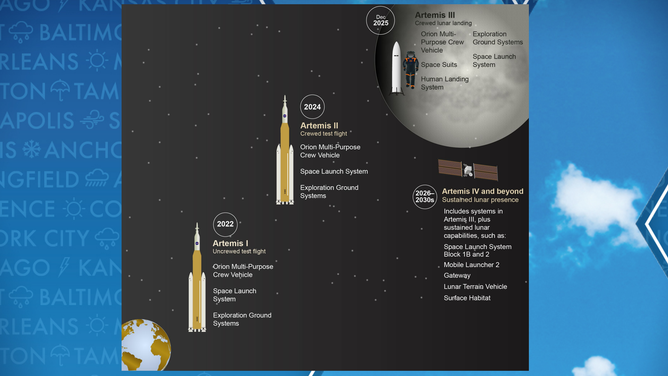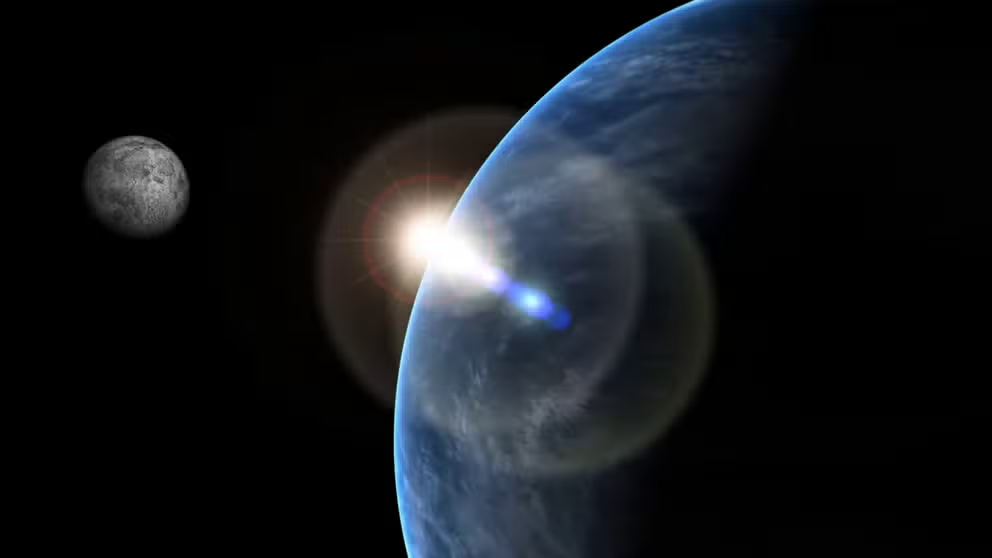White House wants to give Moon its own time zone
Apollo 11’s Neil Armstrong and Buzz Aldrin were the first humans to land on the Moon in 1969. NASA intends to return astronauts to the lunar body as soon as 2026 on the Artemis III mission.
See what's new in the journey to reach the Moon
What's next for exploration of Earth's only natural satellite.
WASHINGTON - The White House has directed NASA to lead efforts to help develop a standard time for the Moon and other planets in our solar system as more companies and countries enter the space race.
According to a recently released memorandum, the new time zone could be called Coordinated Lunar Time (LTC) and be in place by the end of 2026.
A standard lunar day is equivalent to 29.53 Earth days. Due to the Moon's reduced gravity, a clock gains about 56 microseconds compared to 24 hours on Earth.
The idea of space explorers using an agreed-upon time has been floated around for years, with the European Space Agency recently exploring a new potential time zone for the celestial body.
It is unclear whether the U.S. would adopt any proposal by the ESA, as the foreign agency has not publicly stated a timeline for its release.
"With a shared vision and unity of purpose across departments and agencies, the United States will lead the responsible, peaceful, and sustainable exploration of Cislunar space and application of discoveries in this area," the White House Office of Science and Technology Policy memorandum stated. "OSTP will lead and support the implementation of this policy and guidance."

Snow moon rises behind Corno Grande and Pizzo Cefalone peaks (Gran Sasso dItalia National Park) in LAquila, Abruzzo (Italy), on february 5, 2023. February full moon is usually called snow moon. (Photo by Lorenzo Di Cola/NurPhoto via Getty Images)
(Getty Images)
SEE THE OBJECTS HUMANS LEFT BEHIND ON THE MOON
If the memorandum’s timeline is upheld, it would mean the Moon would be in an official time zone before humans’ return to the lunar body.
The Artemis program aims to send men and women to the lunar surface for the first time since 1972.
NASA intends to land astronauts near the Moon’s South Pole during a scheduled 2026 Artemis III mission to search for ice deposits and other vital support elements.
The space agency is also planning to install a communications network on the Moon, much like that of navigation systems used on Earth.

Artemis mission plans
(U.S. Government Accountability Office / FOX Weather)
TIME ZONE DEBATE HITS THE MOON; WORLD ASKS WHAT TIME IS IT REALLY ON THE LUNAR BODY?
In addition to the increased surface activity on the lunar body, NASA is also in the final design stages of its Lunar Gateway, a space station that is expected to orbit near the Moon.
The future space station is expected to be in operation by 2028, and modules could be launched into orbit as early as 2025.
Similar to the International Space Station, the mission will be a joint effort by the U.S., Europe, Japan, Canada and the United Arab Emirates.

Rendering of NASA's Lunar Gateway
(NASA)
